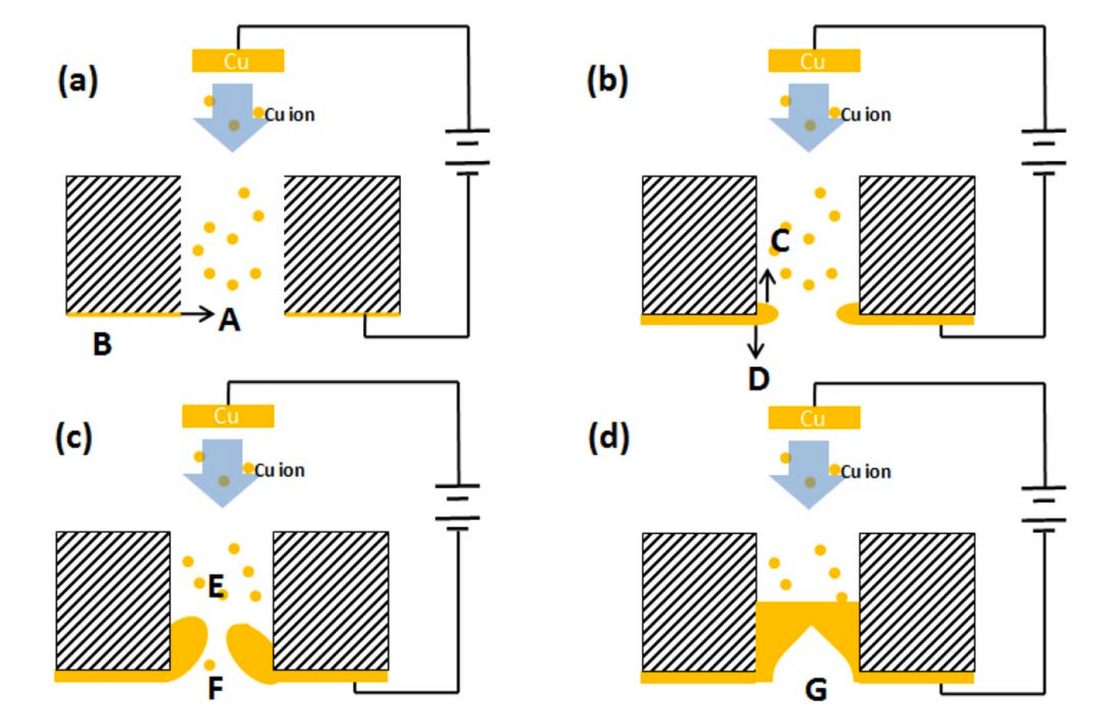
A Novel Sealing Redistribution Layer Approach for Through-Glass via Fabrication
Citation
Article Title: A Novel Sealing Redistribution Layer Approach for Through-Glass via Fabrication
Authors: Shih-Wei Lee, Geng-Ming Chang, Ching-Yun Chang, and Kuan-Neng Chen
Journal: IEEE Transactions on Electron Devices
Digital Object Identifier (DOI): 10.1109/JEDS.2017.2649605
Keywords
- Through-Glass Via (TGV)
- Redistribution Layer (RDL)
- Glass Interposer
- Bottom-Up Plating
- Sealing RD
- Cu-Filler Plating
- Reliability
- Electrical Characterization
- Cost Efficiency
Brief
This article presents a novel sealing redistribution layer (RDL) approach for through-glass via (TGV) fabrication that simplifies the conventional bottom-up process flow by integrating Cu-filler plating and bottom RDL simultaneously.
Summary
This article presents a novel sealing redistribution layer (RDL) approach for simplifying the fabrication of through-glass vias (TGVs) in glass interposers for 3D integration. The conventional bottom-up process for TGV fabrication involves multiple steps, including copper (Cu) filler plating and Cu chemical mechanical polishing (CMP), which are expensive. The proposed approach integrates the Cu-filler plating and bottom RDL formation into a single bottom-up plating step. This eliminates the need for temporary bonding or attaching technology, which are typically required for bottom metal layer deposition in conventional bottom-up approaches.
Here's how the sealing RDL approach works:
- A barrier/adhesion layer and Cu seed layer are deposited on a glass substrate with laser-drilled vias.
- The RDL pattern is defined using photolithography, and the RDL sealing is formed through electroplating.
- A resist layer protects the RDL during subsequent bottom-up Cu plating of the vias.
- Finally, the resist and barrier/seed layers are removed to complete the TGV with RDL.
The authors fabricated TGVs with a diameter of 50 µm and a depth of 250 µm on a glass substrate to investigate the electrical characteristics and reliability of their proposed approach. Different structures, including Kelvin, comb, and daisy chain structures, were fabricated and tested. The results demonstrated:
- Low Resistance: The fabricated TGVs exhibited a resistance of 3 mΩ, closely matching the theoretical value. Daisy chain structures with multiple TGVs also showed a linear increase in resistance with the number of TGVs, indicating good integration performance.
- Excellent Insulation: The leakage current between adjacent TGVs in a comb structure was less than 1 nA, significantly lower than typical leakage currents observed in through-silicon vias (TSVs). The capacitance of the TGVs remained stable at 2 pF under varying voltage bias.
- High Reliability: The TGVs fabricated using the sealing RDL method demonstrated excellent reliability under humidity and thermal cycling tests. The daisy chain structures maintained their linear resistance characteristics even after exposure to high humidity (85%) and temperature (130°C) for 48 hours. The structures also showed improved resistance linearity after 500 thermal cycles between -40°C and 125°C.
The authors conclude that the sealing RDL approach offers a cost-effective solution for fabricating high-performance glass interposers for 3D integration. The approach enables the simultaneous fabrication of bottom RDL and Cu filler plating, eliminating the need for expensive plating additives and handling wafers.
Origin: https://ieeexplore.ieee.org/stamp/stamp.jsp?tp=&arnumber=7809077
